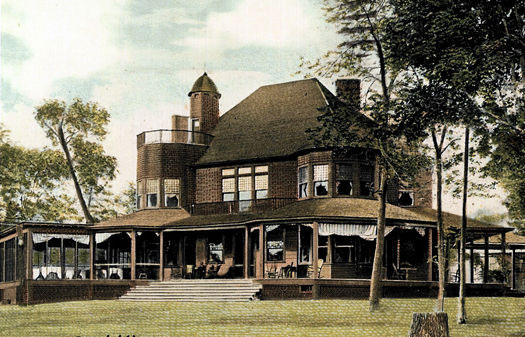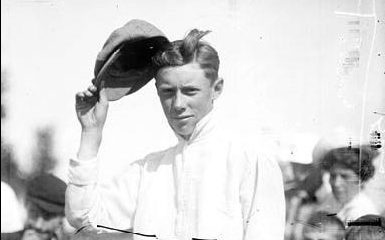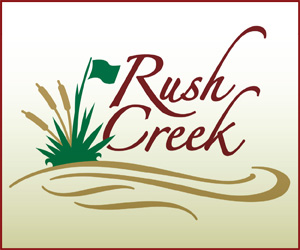The History Of Minnesota Golf – The Game Begins
By Rhett Arens
This is our second installment of a 7 part series on the History of Minnesota Golf. Last month we provided an overview of the series and brief capsule of each of the 20 year segments stretching from 1880 through 2018, a 130 years of outstanding golf and compelling stories. This month we cover Where the Game Begins from the years of 1890 through 1920. I know, it’s more than 20 years, but like everything, golf walked before it ran and once it hit stride it never looked back. Keep in mind that just before the turn of the century there were less than a 100 golf courses in the entire country. Most of those were concentrated along the east coast.
The first organized club to introduce golf to the greater Twin Cities and for that matter Minnesota was Town & Country Club. The Club was initially launched in 1887 to provide a gathering place and gaming club with a modest headcount of 60 or so patrons from both St. Paul and Minneapolis’s upper society – primarily bankers, politicians, lawyers and assorted captains of industry. Many of the original founders would go on to champion the opening of other clubs throughout the Twin Cities.
The original club was housed on the shores of Como Lake in a private home, but soon outgrew that space and moved to its current location high above the Mississippi River where access and commuting distances from both the west and east was more balanced. At that time, the total population in the Twin Cities was just tipping past a half-million people and membership in these types of clubs was for the rich and famous only. In early 1893 the Town & Country Club had tossed around the idea of constructing a golf course, which was certainly questioned by some members given the game was relatively unknown at that time. Those barriers would soon fade with a little networking and persuasion.
The Club was an oasis of recreation with bowling, skating, table games, cards, tennis and fine dining. Adding an intriguing game from Scotland was a natural fit and eventually had the support of the clubs more well travelled members. Golf had just been introduced to the United States on the Atlantic seaboard and within 10 years Minnesota had its first set of holes with a handful of the T&C members partaking. By the end of 1893 those first few holes had been laid out, tested, refined and people sat up and took notice. Improvements in the grounds and equipment drove further interest and eventually Town & Country Club had a dedicated following, improving membership enrollment to over 500 members and by 1898 it officially introduced its fully realized, nine-hole course to the world.
It wasn’t long and some of the Club’s core members had the golf fever, but were looking for options closer to home. The well connected were able to secure financing, purchase land and the next wave of courses were brought into the planning stage, thus spreading access to the game. As year-on-year investment went into the golf operations at Town & Country Club, members jumped on the bandwagon of this relatively novel game and by 1905 golf had become ‘the’ primary interest at Town & Country Club. A handful of other courses were opened, with more on the horizon and with this, the Minnesota golf game was on sturdy legs.
Other clubs following Town & Country Club into Minnesota golf history before the turn of the century were Minnetonka Club, Minikahda Club, Northland Country Club, Winona Golf Club and a few others. After 1900 there were 29 more courses added to the Minnesota roster before the 1920’s came in. Many of those are still in operation to this day, under the same name… Red Wing, Columbia, Phalen, Mankato, Somerset, Interlachen, White Bear Yacht Club to name a few. Key movers and shakers in those early years generally circulated in and around the private clubs.
In 1901 the Minnesota Golf Association (MGA) was established to provide a governing body and oversee the accelerating growth with members from 7 different clubs coming together under one organizational umbrella. This turned out to be a critical step in Minnesota golf evolution. As a singular organization, they could garner the attention of the east coast hierarchy and very shortly thereafter championship level tournament play made its first appearance on Minnesota soil.
As clubs began to open in the outstate areas (Austin, St. Cloud, Worthington), access for playing began to open as well. It was no longer only a game for the privileged as the middle-class citizens were finding their way onto the courses and into the mindset of the MGA, who saw an opportunity to promote and leverage the game to a wider audience.
The game was (and always has been) viewed as a traditional sport from the ‘old country.’ Careful management and course protocol were diligently enforced through the MGA to preserve the games integrity and rules. It’s interesting that the game was always considered a game for the public in Scotland as it grew and spread throughout Great Britain, but without a sizable monetary incentive to provide rounds to the public in the U.S., it remained a private club endeavor for a number of years. Eventually municipalities, public athletic forums and entrepreneurs saw the demand side of the equation and found their way to building out public golf courses. True to the time-tested adage…they built it and they came.
During this early time period in golf history there was also a migration of sorts from a rural, agriculturally driven economy to a more urban, industrialized economy. Generally considered to be a gentleman’s game there was more and more participation from women at the courses. The Minnesota Women’s Golf Association was formed in 1915 to service the demands of growing interest from women players. This gained instant traction and women were soon on the tee box taking their swings.
Amazingly the following year in 1916 Minnesota hosted it first of many national tournament events. The men’s U.S. Open Championship was held at Minikahda Club. Amateur Chick Evans led the tournament front-to-back on his way to setting a new U.S. Open scoring record that stood for the next 20 years. At that time, the U.S. Open was in its 22nd year of existence. Walter Hagan was a notable entrant in the Open tourney that year. The following year the Minnesota PGA organization was started. The game was gaining broader public attention and accolades from within the world of sports.
The origins of Town & Country Club’s beginnings, whether myth or not, make an interesting story. The beginnings involved a gossip column in the St. Paul paper and an insurance man named William Peet. Peet was also a member of the Town & Country Club and was looking for alternative recreational options for the club which he felt had grown a bit stale. The reporter assigned to report on gossip or generate gossip depending on how you look at it was Charles Hawkes. After an exploratory visit to Peet’s office, and an unproductive hour or so, Hawkes left Peet’s office with nothing solid to write about. Strapped with a deadline on the gossip column, he had recalled a statement by Peet suggesting an article on this new game called golf. So Hawkes took notice and wrote an exaggerated tale of the game, overstepping his editorial bounds by stating Town & Country Club was planning to build a course, which wasn’t true at the time.
The next day the story was read by a local Scotsman, George McCree who then approached Peet offering his assistance and expertise towards the building project, hoping to bring a bit of the motherland to his new home in the Twin Cities. The game was still very new to the U.S. in the mid 1880’s, almost entirely focused on the east coast, but awareness for the game was growing in high society circles. With this in mind and the desire to light a fire under the Town & Country Club’s membership, Peet reconsidered McCree’s proposal and the first embers of Minnesota golf was set ablaze.

Original Town & Country Club Clubhouse































